Factores de riesgo de caries dental en niños preescolares con fisura de labio y paladar
Risk factors of dental caries in preschool children with cleft lip and palate
Resumen
DOI:https://doi.org/10.53766/GICOS/2024.09.02.02
RESUMEN
Objetivo: identificar los factores de riesgo de caries dental en niños preescolares con labio y paladar fisurado. Metodología: estudio de tipo analítico transversal donde participaron 70 niños de 3 a 6 años con FLAP que fueron atendidos por el servicio de odontopediatría de la Organización No Gubernamental Qorito (Lima-Perú), de enero a diciembre del 2022. Las variables analizadas fueron caries dental, higiene oral, dieta, tipo de fisura, sexo, edad. Los análisis aplicados fueron la evaluación de Spearman, la prueba de Chi cuadrado y la regresión logística múltiple. Resultados: la prevalencia de caries dental en niños con FLAP fue del 92,9%. Para esto se empleó un índice que codifica los dientes deciduos como cariados, extraídos y obturados (CEOD) con manchas blancas. Además, se encontró que el tipo de fisura es un factor de riesgo para la caries dental con un (OR) de 3,15. Conclusión: la caries dental tiene una relación significativa con una deficiente higiene oral. A su vez, los niños con labio y paladar fisurado con una buena higiene oral tenían menos probabilidades de desarrollar caries dental que aquellos con una higiene oral deficiente.
ABSTRACT
Objective: Identify the risk factors of dental caries in preschool children with cleft lip and palate. Methods: Analytical cross-sectional study of pediatric patients of the pediatric dentistry service of the Qorito Non-Governmental Organization for cleft lip and palate patients in Lima, Peru. 70 Cleft Lip Palate (CLP) children aged 3–6 years were enrolled. The analyzed variables were dental caries, oral hygiene, diet, type of cleft, sex, and age. The applied analyses were Spearman’s correlation, Chi-squared test, and multiple logistic regression. Results: The prevalence of dental caries in CLP children was 92,9%. The index that encodes the deciduous teeth with dental caries damages (dmf) with white spots as decayed, extracted, and obturated was used. Furthermore, it was found that the type of fissure is a risk factor for dental caries with an (OR) of 3.15. Conclusion: Dental caries has a significant relationship with poor oral hygiene. In turn, children with cleft lip and palate with good oral hygiene were less likely to develop dental cavities than those with poor oral hygiene.
Recibido: 03-03-2024
Aprobado: 05-04-2024
Publicado: 25-05-2024
Palabras clave
Texto completo:
PDFReferencias
Abirami, S., Panchanadikar, N., Muthu, M. S., Balasubramanian, S., Murthy, J., Mohan, A., Haridoss, S. & Subbalekshmi, T. (2021). Effect of Sustained Interventions from Infancy to Toddlerhood in Children with Cleft Lip and Palate for Preventing Early Childhood Caries. Caries Research, 55(5), 554-562. https://doi.org/10.1159/000517210
Abirami, S., Panchanadikar, N. T., Muthu, M. S., Swaminathan, K., Vignesh, K. C., Agarwal, A. & Kirubakaran, R. (2022). Dental Caries Experience among Children and Adolescents with Cleft Lip and/or Palate: An Umbrella Review. International Journal of Clinical Pediatric Dentistry, 15(Suppl 2), S261-S268. https://doi.org/10.5005/jp-journals-10005-2169
Allam, G. G., & Sobeh, I. A. (2021). Caries Experience Varies in Egyptian Children With Different Combinations of Cleft Lip and Palate and Is Related to Carbohydrate Intake Between Meals. The Cleft Palate-Craniofacial Journal: Official Publication of the American Cleft Palate-Craniofacial Association, 58(4), 414-418. https://doi.org/10.1177/1055665620952297
Aranha, A. M. F., Alves de Oliveira, A., Meireles, A. & Ricci, L. E. (2021). Cárie Dentária em Indivíduos com Fissuras Labiopalatinas: Revisão de Literatura. UNICIÊNCIAS, 24(1), 112–117. https://doi.org/10.17921/1415-5141.2020v24n1p112-117
Arias, Á. & Fuentes, L. (2018). Oral morbidity and associated factors in Chilean preschoolers and schoolchildren: A preliminary review. International Journal of Medical and Surgical Sciences, 5(1), Article 1. https://doi.org/10.32457/ijmss.2018.008
Chaudhari, P. K., Kharbanda, O. P., Chaudhry, R., Pandey, R. M., Chauhan, S., Bansal, K., & Sokhi, R. K. (2021). Factors Affecting High Caries Risk in Children With and Without C left Lip and/or Palate: A Cross-Sectional Study. The Cleft palate-craniofacial journal : o fficial publication of the American Cleft Palate-Craniofacial Association, 58(9), 1150– 1 159. https://doi.org/10.1177/1055665620980206
Cook, A. K., Kerins, C. A. & Heppner, C. E. (2016). Dental Impacts on Health-related Quality of Life of Children with Orofacial Clefts. Pediatric dentistry, 38(3), 218–223.
De Andrade, R. S., Oliveira, F. E. S. de, Martelli, D. R. B., de Barros, L. M., & Martelli Júnior, H. (2023). Maternal consumption of caffeine and second-hand tobacco smoke as risk factors for the development of oral clefts. Clinics (Sao Paulo, Brazil), 78, 100266. https://doi.org/10.1016/j.clinsp.2023.100266
Fonseca-Souza, G., de Oliveira, L. B., Wambier, L. M., Scariot, R., & Feltrin-Souza, J. (2022). Tooth abnormalities associated with non-syndromic cleft lip and palate: Systematic review and meta-analysis. Clinical Oral Investigations, 26(8), 5089-5103. https://doi.org/10.1007/s00784-022-04540-8
Greene, J. C., & Vermillion, J. R. (1964). The simplified oral hygieneindex. J. Am. Dent. Assoc., 68, 7-13. doi: 10.14219/jada.archive.1964.0034.
Grewcock, R. E., Innes, N. P. T., Mossey, P. A., & Robertson, M. D. (2022). Caries in children with and without orofacial clefting: A systematic review and meta-analysis. Oral Diseases, 28(5), 1400-1411. https://doi.org/10.1111/odi.14183
Gupta, A., Sethi, S., Wadhwa, J., Batra, P., & Shick, E. A. (2023). Is caries prevalence site-specific in cleft lip and palate patients? A systematic review and meta-analysis. Dental Research Journal, 20, 111.
Kirthiga, M., Murugan, M., Saikia, A., & Kirubakaran, R. (2019). Risk Factors for Early Childhood Caries: A Systematic Review and Meta-Analysis of Case Control and Cohort Studies. Pediatric Dentistry, 41(2), 95-112.
Lehtonen, V., Sándor, G. K., Ylikontiola, L. P., Koskinen, S., Pesonen, P., Harila, V., & Anttonen, V. (2015). Dental treatment need and dental general anesthetics among preschool-age children with cleft lip and palate in northern Finland. European Journal of Oral Sciences, 123(4), 254-259. https://doi.org/10.1111/eos.12195
Lertsirivorakul, J., Kajornchaivut, N., Pungchanchaikul, P., Puasiri, S., & Jinaporntham, S. (2017). Dental Caries Experience, Treatment Needs, Dental Anomalies and Malocclusion in Preschool Children with Cleft Lip and/or Palate. Journal of the medical association of thailand, 100(8), Article 8.
Lizcano, D. B., Pabón, M. A. P. & Meneses, L. T. F. (2016). Presencia de caries dental en pacientes con labio y paladar hendido: Una revisión sistemática. Ustasalud, 15, 28-36. https://doi.org/10.15332/us.v15i0.2078
Luzzi, V., Zumbo, G., Guaragna, M., Di Carlo, G., Ierardo, G., Sfasciotti, G. L., Bossù, M., Vozza, I. & Polimeni, A. (2021). The Role of the Pediatric Dentist in the Multidisciplinary Management of the Cleft Lip Palate Patient. International journal of environmental research and public health, 18(18), 9487. https://doi.org/10.3390/ijerph18189487
Machiulskiene, V., Campus, G., Carvalho, J. C., Dige, I., Ekstrand, K. R., Jablonski-Momeni, A., Maltz, M., Manton, D. J., Martignon, S., Martinez-Mier, E. A., Pitts, N. B., Schulte, A. G., Splieth, C. H., Tenuta, L. M. A., Ferreira Zandona, A. & Nyvad, B. (2020). Terminology of Dental Caries and Dental Caries Management: Consensus Report of a Workshop Organized by ORCA and Cariology Research Group of IADR. Caries Research, 54(1), 7-14. https://doi.org/10.1159/000503309
Ministerio de salud (2018). Norma Técnica de Salud para la Gestión de la Historia Clínica (R.M. No 214-2018/ MINSA y su modificatoria aprobada con R.M. No 265-2018/MINSA). https://bvs.minsa.gob.pe/local/MINSA/4379.pd
Mutarai, T., Ritthagol, W. & Hunsrisakhun, J. (2008). Factors influencing early childhood caries of cleft lip and/or palate children aged 18 to 36 months in southern Thailand. The Cleft Palate-Craniofacial Journal: Official Publication of the American Cleft Palate-Craniofacial Association, 45(5), 468-472. https://doi.org/10.1597/07-017.1
Ndekero, T. S., Carneiro, L. C., & Masumo, R. M. (2021). Prevalence of early childhood caries, risk factors and nutritional status among 3-5-year-old preschool children in Kisarawe, Tanzania. PloS one, 16(2), e0247240. https://doi.org/10.1371/journal.pone.0247240
Pesaressi, E., Villena, R. S. & Frencken, J. E. (2019). Dental caries and oral health‐related quality of life of 3‐year‐olds living in Lima, Peru. International Journal of Paediatric Dentistry, 30(1), 57-65. https://doi.org/10.1111/ipd.12582
Rodrigues, R., Chung, A. P., Mortensen, M. S., Fernandes, M. H., Monteiro, A. B., Furfuro, R., Silva, C. C., Manso, M. C., Sørensen, S. J. & Morais, P. V. (2021). Temporal oral microbiome changes with brushing in children with cleft lip and palate. Heliyon, 7(3), e06513. https://doi.org/10.1016/j.heliyon.2021.e06513
Rodrigues, R., Fernandes, M. H., Bessa Monteiro, A., Furfuro, R., Carvalho Silva, C., Vardasca, R., Mendes, J. & Manso, M. C. (2019). Are there any solutions for improving the cleft area hygiene in patients with cleft lip and palate? A systematic review. International Journal of Dental Hygiene, 17(2), 130-141. https://doi.org/10.1111/idh.12385
Romero- Velarde, M., Cruz- Gonzales, G. & Morales- Vadillo, R. (2023). Factores de riesgo asociados a la presencia de caries dental en niños con labio y paladar fisurado de cinco regiones del Perú. GICOS, 8(3), 70-83
https://doi.org/10.53766/GICOS/2023.08.03.05
Sundell, A. L., Nilsson, A. K., Ullbro, C., Twetman, S. & Marcusson, A. (2016). Caries prevalence and enamel defects in 5- and 10-year-old children with cleft lip and/or palate: A case-control study. Acta odontologica Scandinavica, 74(2), 90–95. https://doi.org/10.3109/00016357.2015.1044562
Surtie, F., Ebadi, M., Klus, B. A. & Schroth, R. J. (2023). Prevalence of Treatment of Early Childhood Caries among Children with Cleft Lip and/or Cleft Palate in Manitoba. The Cleft Palate-Craniofacial Journal: Official Publication of the American Cleft Palate-Craniofacial Association, 10556656231164515. https://doi.org/10.1177/10556656231164515
Świtała, J., Sycińska-Dziarnowska, M., Spagnuolo, G., Woźniak, K., Mańkowska, K. & Szyszka-Sommerfeld, L. (2023). Oral Microbiota in Children with Cleft Lip and Palate: A Systematic Review. Journal of Clinical Medicine, 12(18), 5867. https://doi.org/10.3390/jcm12185867
Tannure, P. N., Costa, M.de C., Küchler, E. C., Romanos, H. F., Granjeiro, J. M. & Vieira, A. R. (2012). Caries experience in individuals with cleft lip and palate. Pediatric dentistry, 34(2), 127–131.
Weraarchakul, W. & Weraarchakul, W. (2017). Dental Caries in Children with Cleft Lip and Palate. Journal of the Medical Association of Thailand, 100(supl 6):S131-5
Worth, V., Perry, R., Ireland, T., Wills, A. K., Sandy, J. & Ness, A. (2017). Are people with an orofacial cleft at a higher risk of dental caries? A systematic review and meta-analysis. British Dental Journal, 223(1), 37-47. https://doi.org/10.1038/sj.bdj.2017.581
Wu, Q., Li, Z., Zhang, Y., Peng, X. & Zhou, X. (2023). Dental caries and periodontitis risk factors in cleft lip and palate patients. Frontiers in Pediatrics, 10. https://www.frontiersin.org/articles/10.3389/fped.2022.1092809
Yezioro-Rubinsky, S., Eslava-Schmalbach, J. H., Otero, L., Rodríguez-Aguirre, S. A., Duque, Á. M., Campos, F. M., Gómez, J. P., Gómez-Arango, S., Posso-Moreno, S. L., Rojas, N. E., & Garzón-Orjuela, N. (2020). Dental Anomalies in Permanent Teeth Associated With Nonsyndromic Cleft Lip and Palate in a Group of Colombian Children. The Cleft Palate-Craniofacial Journal: Official Publication of the American Cleft Palate-Craniofacial Association, 57(1), 73-79. https://doi.org/10.1177/1055665619861498
Enlaces refback
- No hay ningún enlace refback.
Depósito Legal Electrónico: ME2016000090
ISSN Electrónico: 2610-797X
DOI: https://doi.org/10.53766/GICOS
| Se encuentra actualmente registrada y aceptada en las siguientes base de datos, directorios e índices: | |||
 | |||
 |  |  |  |
 | 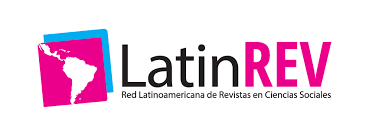 | ||
 | 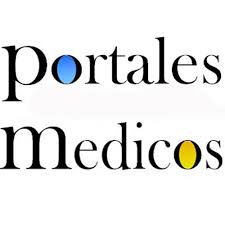 |  |  |
 |  | 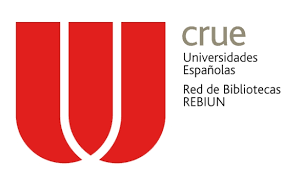 | 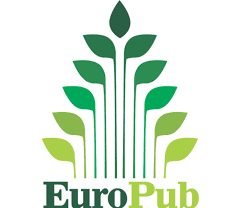 |
 |  | 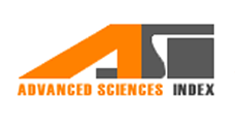 | 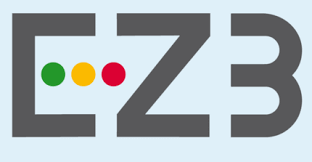 |
 |  |  | |
![]()
Todos los documentos publicados en esta revista se distribuyen bajo una
Licencia Creative Commons Atribución -No Comercial- Compartir Igual 4.0 Internacional.
Por lo que el envío, procesamiento y publicación de artículos en la revista es totalmente gratuito.

